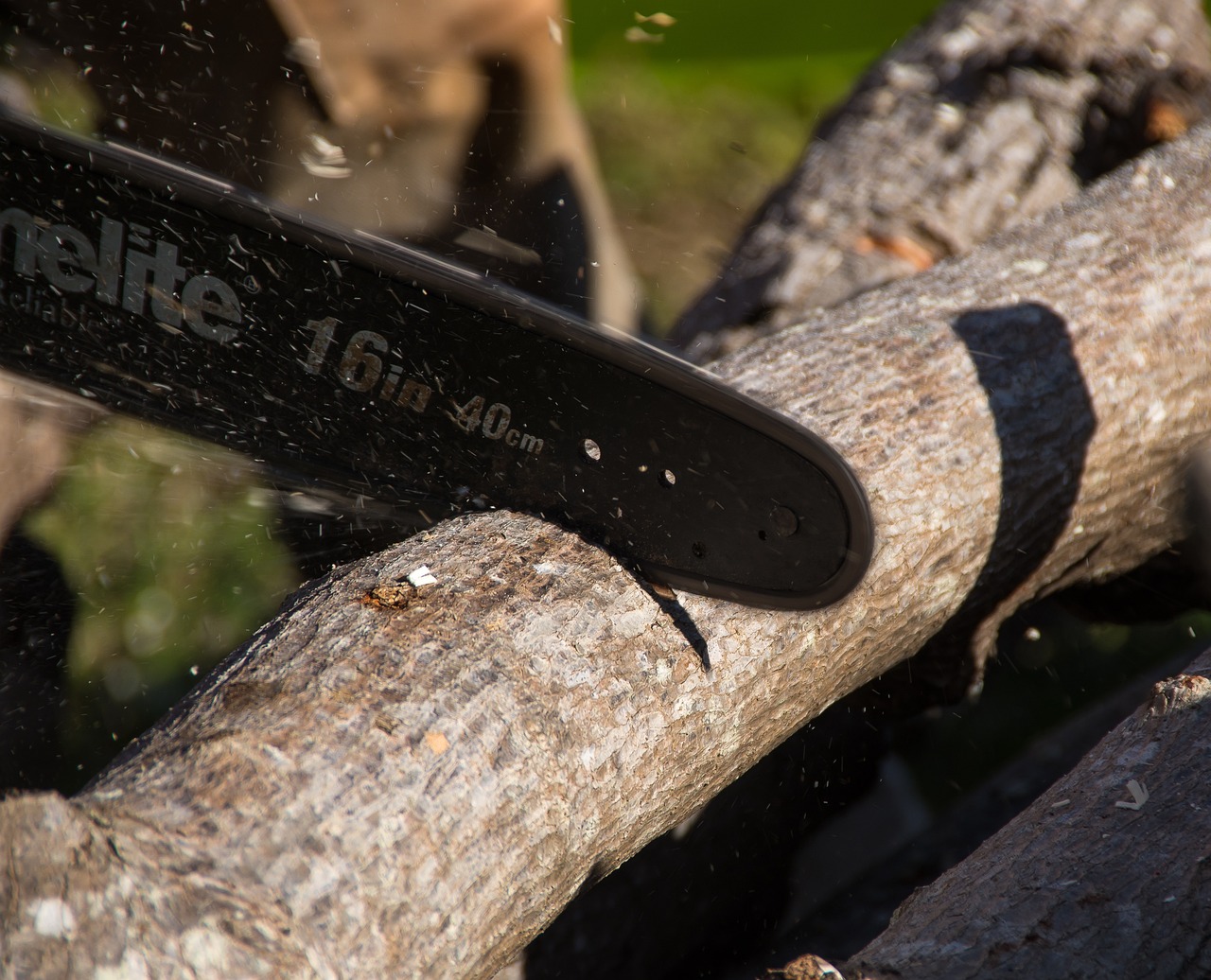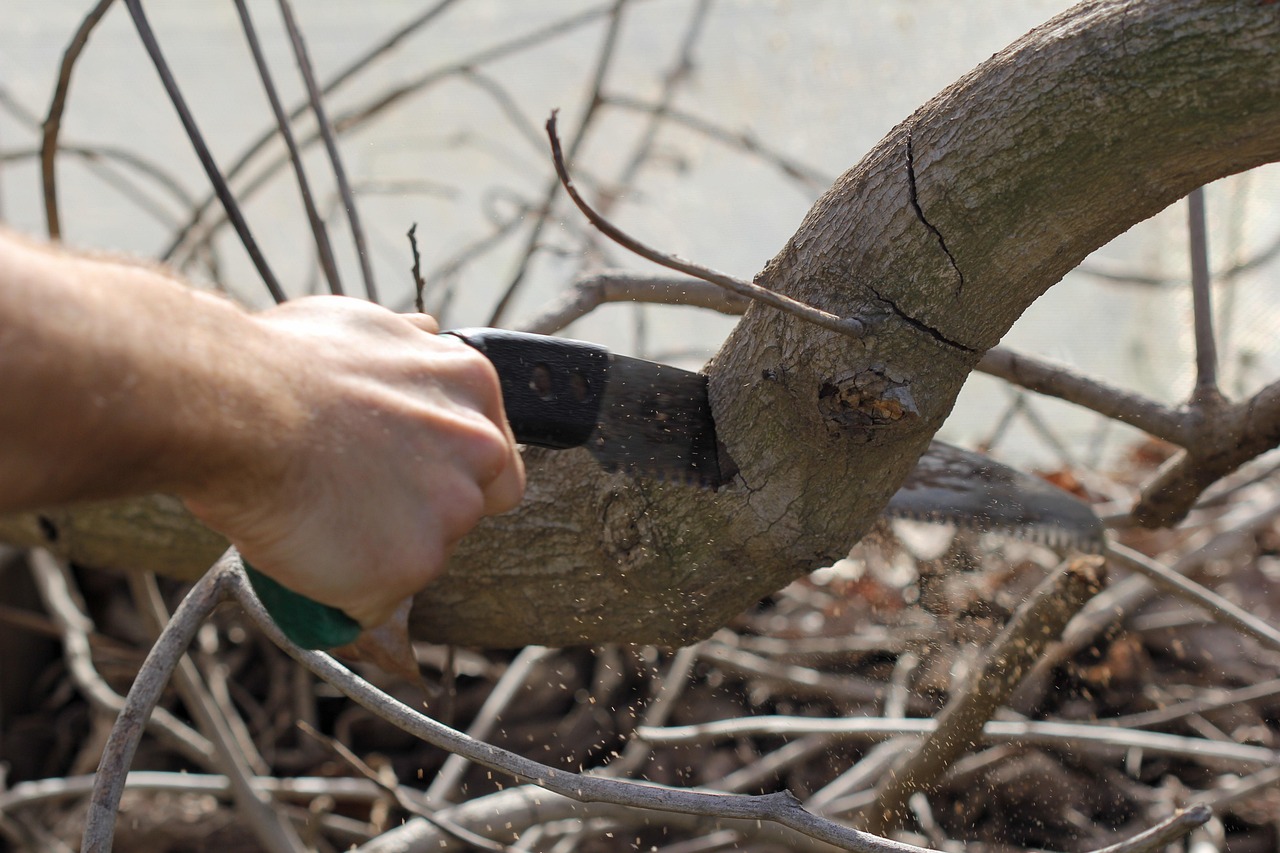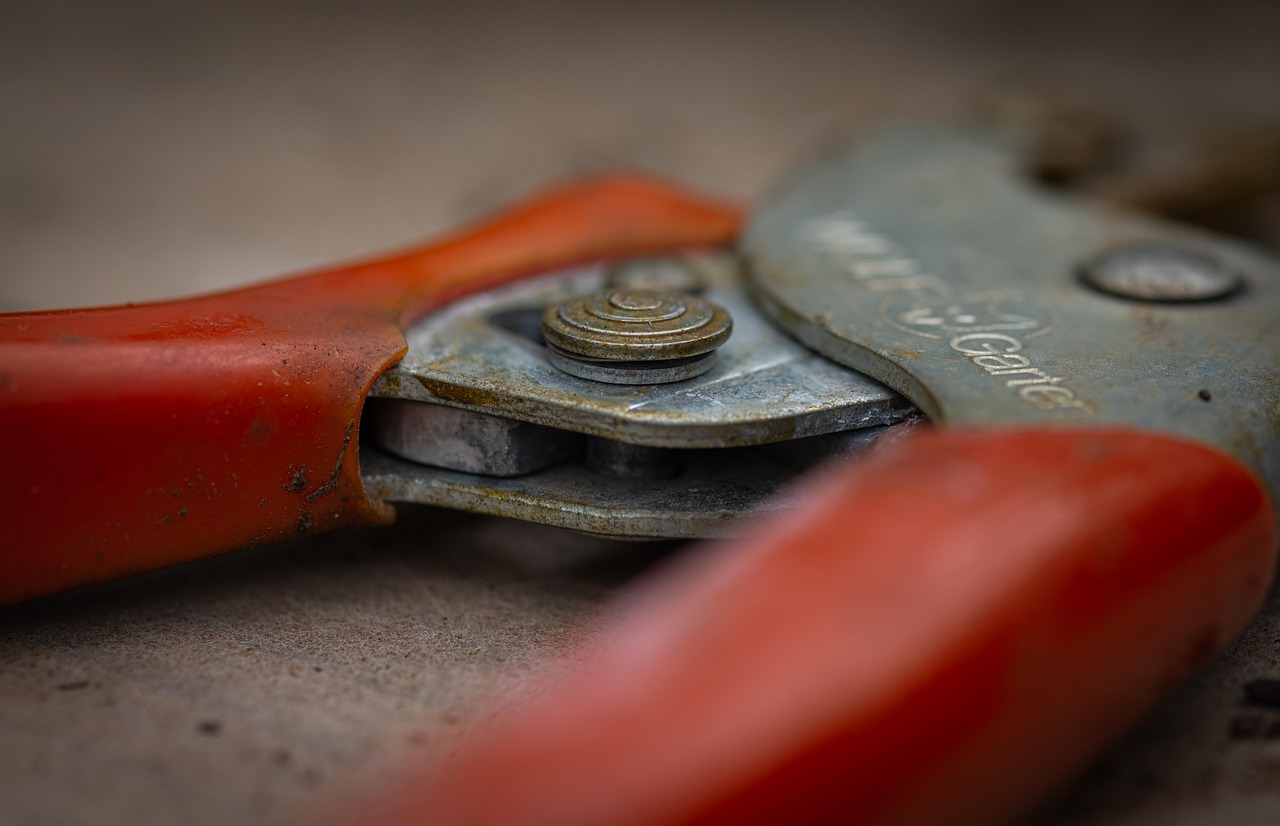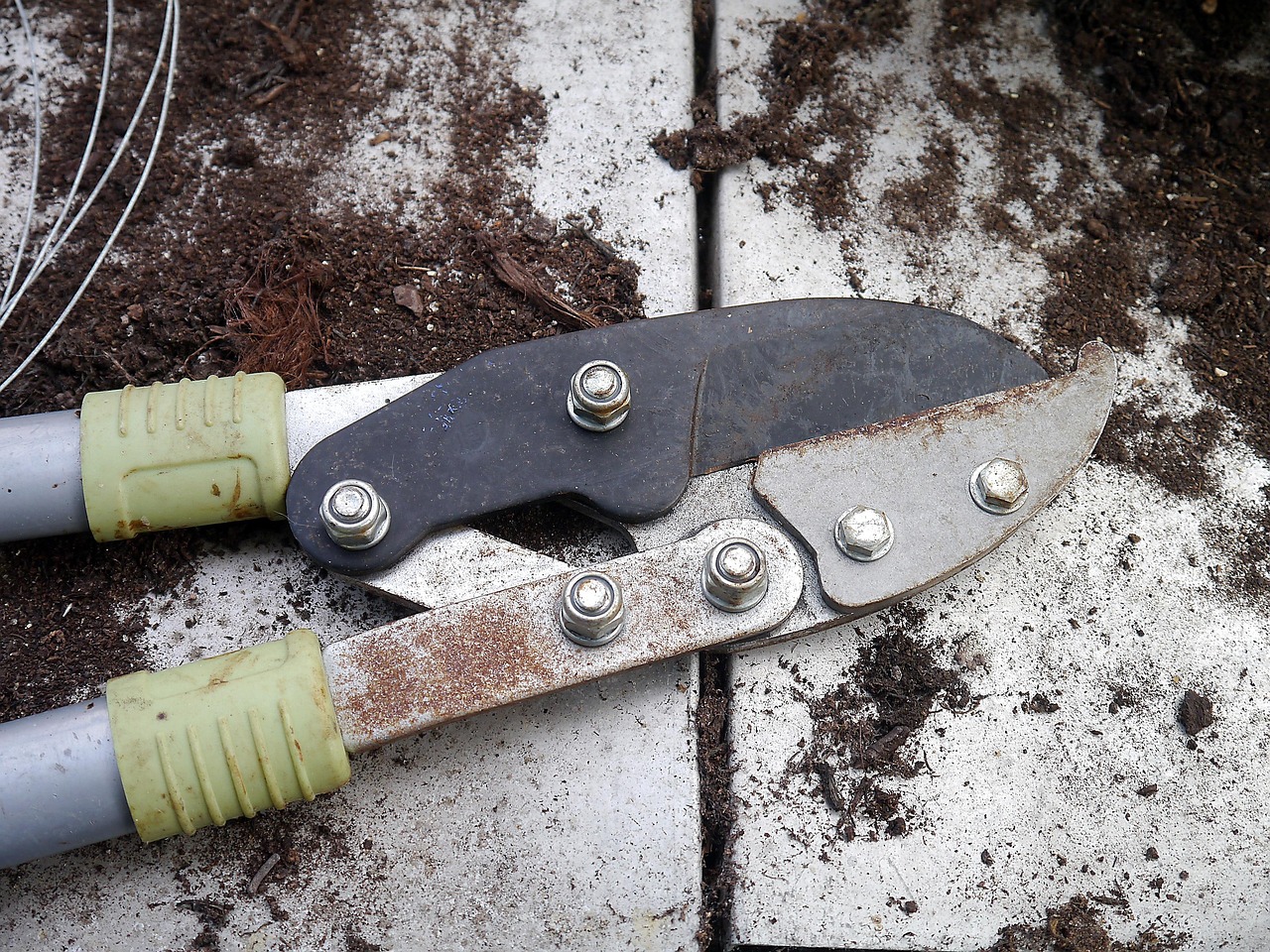To sharpen pruning tools for efficiency, start by cleaning the blades with soap and water. Use a sharpening stone or file to create a sharp edge. Maintain a consistent angle, typically 20 to 30 degrees. Finally, lubricate and store tools properly to prolong their lifespan.
Understanding the Importance of Sharp Pruning Tools
Pruning tools are essential for maintaining the health and appearance of plants. Sharp tools make clean cuts, which help prevent damage to the plant. When tools are dull, they can crush stems and leaves rather than cutting them cleanly. This can lead to infections and other issues for the plant.

Regularly sharpening your pruning tools not only enhances their performance but also reduces the effort needed during pruning. A well-maintained tool allows for quicker, more efficient work, saving time and energy. Additionally, using sharp tools minimizes fatigue, making gardening more enjoyable.
Types of Pruning Tools That Need Sharpening
Several types of pruning tools require regular sharpening. Here are some common ones:
- Bypass pruners
- Anvil pruners
- Hedge shears
- Loppers
- Chainsaws
- Saws
Each tool has its specific design and cutting mechanism. Understanding these mechanisms is crucial for effective sharpening.

Tools Needed for Sharpening
Before you begin sharpening your pruning tools, gather the necessary supplies. The following items are commonly used:
- Sharpening stone or whetstone
- File
- Oil or lubricant
- Wire brush or scrub pad
- Protective gloves
- Safety goggles
Having the right tools on hand will make the sharpening process smoother and more efficient.
Steps to Sharpen Pruning Tools Effectively
The process for sharpening pruning tools can be broken down into several clear steps:

- Clean the Blades: Begin by removing any dirt or debris from the blades using a wire brush or scrub pad. This prevents any particles from interfering with the sharpening process.
- Inspect the Blade: Look for any chips or significant wear on the blade. If there are deep nicks, you may need to use a file before moving on to a sharpening stone.
- Choose the Right Angle: For most pruning tools, maintaining an angle of 20 to 30 degrees is ideal. This angle allows for a sharp edge while preserving the tool’s integrity.
- Sharpen with a Stone or File: Move the stone or file along the edge of the blade in one direction only. Avoid back-and-forth motions as they can dull the edge.
- Test Sharpness: After sharpening, test the sharpness by cutting through a piece of paper or a small branch. If it cuts cleanly, you have done well.
- Lubricate: After sharpening, apply a small amount of oil to the blades to help protect them from rust and ensure smooth operation.
- Store Properly: Always store your tools in a dry place. Consider hanging them or keeping them in a protective case to prevent damage.
The Benefits of Regular Maintenance
Regular maintenance of your pruning tools offers several benefits:
| Benefit | Description |
|---|---|
| Improved Cutting Efficiency | A sharp blade cuts more cleanly and quickly, reducing physical effort. |
| Increased Tool Longevity | Proper care and sharpening extend the life of your tools. |
| Healthier Plants | Cuts made with sharp tools heal faster, reducing the risk of disease. |
| Satisfaction and Enjoyment | A well-maintained tool makes gardening tasks more enjoyable. |
By understanding how to sharpen pruning tools correctly and maintaining them regularly, gardeners can enhance their gardening experience significantly.
The next section will delve deeper into specific techniques for sharpening various types of pruning tools. Each tool has unique characteristics that can influence how you should approach the sharpening process.

Techniques for Sharpening Different Pruning Tools
Sharpening techniques can vary depending on the type of pruning tool you are using. Each tool has its own design and cutting mechanism, requiring specific approaches for optimal results. This section will explore the best methods for sharpening common pruning tools.
Bypass Pruners
Bypass pruners are designed like scissors, with two blades that pass by each other. This design allows for clean cuts on living plants. To sharpen bypass pruners:
- Clean the Blades: Use a wire brush to remove debris.
- Inspect the Edges: Look for chips or dullness on both blades.
- Sharpen the Blades: Use a sharpening stone at a 20-degree angle. Make sure to sharpen both blades for even cutting.
- Test the Cut: Cut through paper to check sharpness.
- Lubricate: Apply oil to the pivot point to ensure smooth operation.
Anvil Pruners
Anvil pruners have a single sharp blade that cuts against a flat surface (the anvil). This type is effective for cutting dead wood. Sharpening these pruners requires a slightly different method:
- Clean the Anvil: Ensure the anvil surface is free from debris.
- Sharpen the Blade: Focus on sharpening the blade at an angle of 30 degrees. The flat surface does not require sharpening.
- Check Alignment: Make sure the blade aligns properly with the anvil for effective cutting.
Loppers
Loppers are larger pruning tools used for thicker branches. They require more force and a sharper edge. Here’s how to sharpen loppers:
- Remove Rust and Debris: Clean all surfaces with a wire brush.
- Sharpen with a File: Use a metal file at a consistent angle of about 20 degrees on the cutting edge.
- Adjust the Pivot: Ensure the pivot bolt is tight but allows smooth movement.
Hedge Shears
Hedge shears have long blades and are ideal for trimming hedges and shrubs. To sharpen hedge shears effectively:
- Clean the Blades: Remove any dirt or sap buildup with a cloth or brush.
- Sharpen Using a Whetstone: Hold the shears in one hand and use a whetstone at about a 30-degree angle. Work along the blade in one direction.
- Maintain Evenness: Ensure both blades are sharpened evenly for balanced cutting performance.
Saws
Saws are used for larger branches that cannot be handled by pruners or loppers. Proper sharpening of saws is crucial for efficient cutting:
- Cleansing the Blade: Remove rust and dirt using a wire brush.
- File the Teeth: Use a triangular file to sharpen each tooth, maintaining the original angle. Typically, this is around 60 degrees.
- Check Tooth Alignment: Ensure teeth are evenly spaced and aligned for effective cutting action.
Safety Precautions During Sharpening
When sharpening pruning tools, safety should always be a priority. Here are some precautions to keep in mind:
- Wear Protective Gear: Use gloves and safety goggles to protect your hands and eyes from debris.
- Secure Your Tools: Ensure tools are stable while sharpening to prevent slips or accidents.
- Avoid Over-sharpening: Too much sharpening can weaken blades, leading to damage over time.
Common Mistakes to Avoid
Avoiding common mistakes can significantly improve the effectiveness of your sharpening process. Here are pitfalls to watch out for:
- Using Incorrect Angles: Each tool requires a specific sharpening angle. Using the wrong angle can damage blades.
- Dull Tools: Regular maintenance prevents tools from becoming too dull, making sharpening easier.
- Ineffective Cleaning: Failing to clean blades can hinder sharpness and performance.
By understanding and applying these techniques, you will ensure your pruning tools remain efficient and ready for work. In the next section, we will discuss advanced sharpening methods and tools that can further enhance your tool maintenance routine.
Advanced Sharpening Methods and Tools
While basic sharpening techniques are effective for most gardeners, advanced methods can provide an even sharper edge and extend the life of your pruning tools. This section covers some of these techniques and introduces specialized tools that can enhance your sharpening process.
Using a Bench Grinder
A bench grinder is a powerful tool that can quickly sharpen various types of pruning tools. It is particularly useful for larger blades, such as those found on loppers and saws. When using a bench grinder, consider the following:
- Safety First: Always wear safety goggles and gloves when operating a bench grinder.
- Select the Right Wheel: Use a fine-grit wheel for sharpening. Coarse wheels can remove too much material.
- Maintain the Angle: Hold the blade at the correct angle (typically around 20 to 30 degrees) while grinding.
- Cool the Blade: To prevent overheating, dip the blade in water frequently during sharpening.
Using a Diamond Sharpener
Diamond sharpeners are another excellent option for achieving a razor-sharp edge. They are durable and effective for all types of blades. Here’s how to use them:
- Choose the Grit: Select a diamond sharpener with the appropriate grit for your tool. Finer grits are ideal for finishing touches.
- Apply Even Pressure: Use consistent pressure while sharpening to avoid uneven edges.
- Follow the Blade Profile: Maintain the natural curve of the blade while sharpening to ensure a proper fit.
Using a Tormek Sharpener
The Tormek sharpener is a water-cooled system designed for precision sharpening. This system is particularly suitable for professionals or serious gardeners. Here are steps to use it:
- Set Up the Machine: Follow the manufacturer’s instructions to set up the Tormek sharpener correctly.
- Select the Right Jig: Use the appropriate jig for your tool type to ensure accuracy in sharpening.
- Adjust the Angle: Set the sharpening angle according to the tool you are working on.
- Sharpen with Water: The water cooling system prevents overheating while sharpening, preserving the blade’s temper.
Maintaining Your Sharpening Tools
To ensure effective sharpening, it’s essential to maintain your sharpening tools as well. Here are some tips:
- Clean After Use: Always clean your sharpening tools after use to prevent buildup.
- Store Properly: Keep sharpening tools in a dry place, away from moisture that can cause rust.
- Inspect Regularly: Check for wear and tear on your sharpeners. Replace them as needed to maintain effectiveness.
Sharpening Frequency and Best Practices
The frequency of sharpening your pruning tools depends on usage, but some general guidelines can help you maintain their efficiency:
- After Every Use: For heavy use, consider sharpening after each session to ensure peak performance.
- Seasonal Maintenance: At the beginning of each gardening season, sharpen all tools to prepare for upcoming tasks.
- Keep Records: Maintaining a log of when you sharpen your tools can help you track their condition over time.
The Role of Professional Sharpening Services
If you find that sharpening your tools is too time-consuming or challenging, consider using a professional sharpening service. Here are some points to consider:
- Expertise: Professionals have experience and specialized equipment that can achieve superior results.
- Time-Saving: Outsourcing this task allows you to focus on gardening rather than maintenance.
- Convenience: Many services offer pick-up and delivery options for added convenience.
Conclusion
This section has explored advanced sharpening methods, maintenance tips, and when to consider professional services. By implementing these strategies, gardeners can ensure their pruning tools remain efficient and effective over time. In the final section, we will discuss additional care tips and best practices for long-lasting pruning tools.
Additional Care Tips for Long-Lasting Pruning Tools
To maximize the lifespan and efficiency of your pruning tools, a few additional care tips can be incredibly beneficial. These practices will help maintain the quality and functionality of your tools in between sharpening sessions.
Proper Cleaning After Use
After each use, it is essential to clean your pruning tools thoroughly. Dirt, sap, and plant material can accumulate on the blades, potentially leading to rust and dullness over time. Here are some steps to follow:
- Wipe Down Blades: Use a clean cloth or paper towel to wipe away any debris.
- Use Soapy Water: If tools are particularly dirty, wash them with soapy water and a soft brush. Rinse and dry them immediately.
- Disinfect: To prevent the spread of diseases among plants, consider using a disinfectant solution to wipe down the blades.
Correct Storage Practices
How you store your pruning tools can significantly affect their longevity. Proper storage prevents damage and maintains sharpness.
- Keep Dry: Store tools in a dry location to prevent rust. Avoid damp sheds or garages.
- Avoid Clutter: Store tools in a designated area, away from other equipment that could cause nicks or scratches.
- Use Protective Cases: For more delicate tools, consider using protective sheaths or cases to shield blades from impact.
Regular Inspections
Conduct regular inspections of your pruning tools to catch any signs of wear or damage early. This proactive approach helps maintain performance:
- Check for Rust: Inspect blades for any signs of rust and treat them promptly with rust remover or oil.
- Examine Handles: Look for cracks or splinters in wooden handles and replace them if necessary.
- Assess Springs and Bolts: Ensure that springs function correctly and bolts are tightened securely to avoid accidents during use.
Final Thoughts
Sharpening and maintaining your pruning tools is essential for efficient gardening. By following the methods outlined in this article, you can ensure that your tools stay sharp and perform optimally. Regular cleaning, proper storage, and frequent inspections will help prolong the life of your tools and enhance your gardening experience.
The importance of using sharp tools cannot be overstated. Sharp pruning tools lead to cleaner cuts, which means healthier plants and less physical effort on your part. Whether you choose to sharpen your tools yourself or seek professional services, understanding the process is key to being an effective gardener.
Remember that each type of pruning tool has specific requirements for sharpening and maintenance. Tailoring your approach based on the tool type will yield the best results. By investing time into maintaining your tools, you are investing in the health of your garden and the joy of gardening itself.
In conclusion, with the right techniques and care practices, your pruning tools can remain efficient and ready for any task at hand. Happy gardening!
